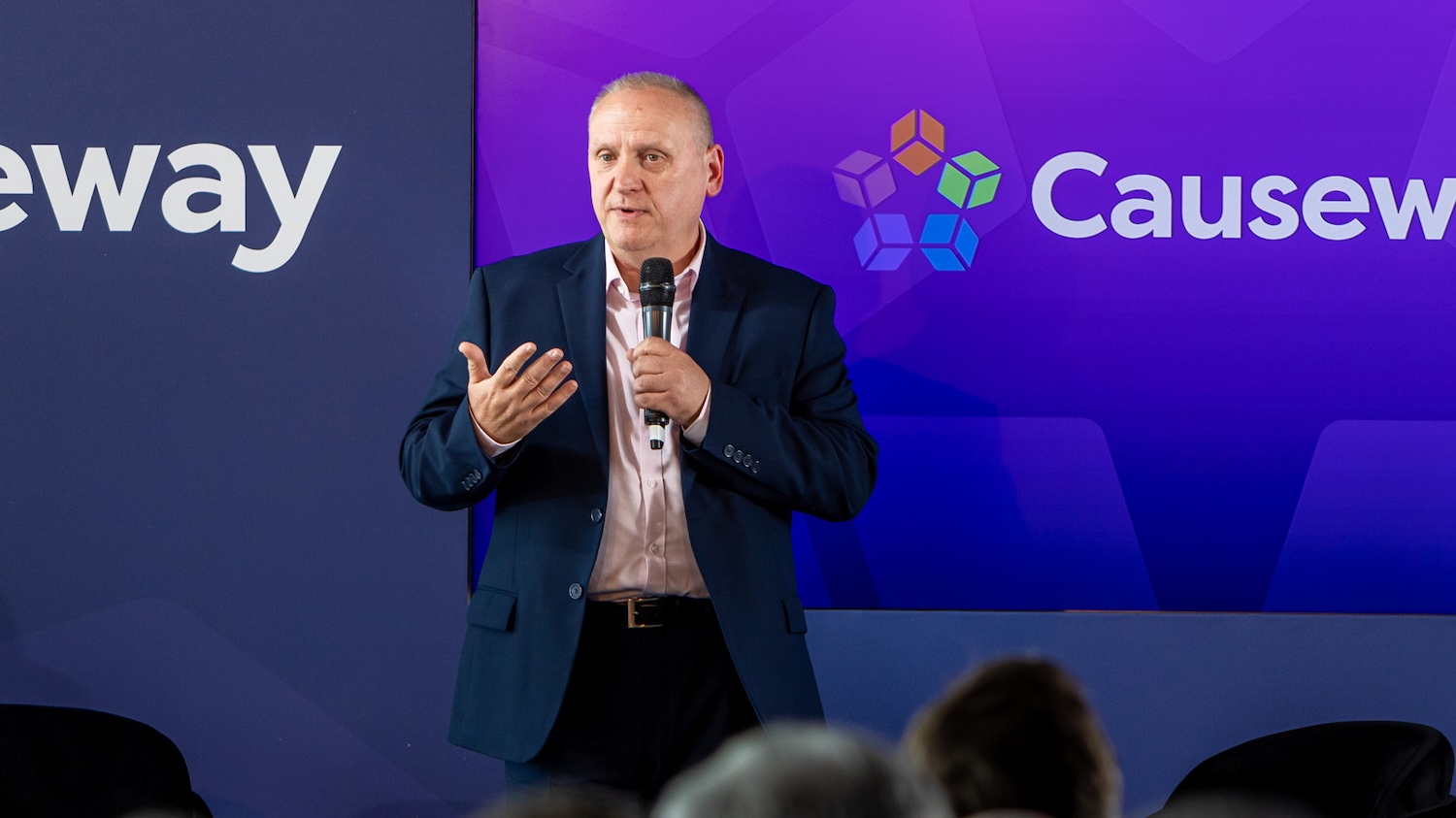Inclusive recruitment: it’s time for employers to ‘step up’
A leading academic shares with CIOB People new research that underscores construction’s recruitment challenges
Dr Florence Phua, associate professor at the University of Reading’s School of Construction Management and Engineering, is committed to helping to drive change across the construction industry.
Phua is working closely with her students to demonstrate how the industry can improve its approach to equality, diversity and inclusion (EDI), particularly through the recruitment process.
Phua’s students have undertaken three interrelated studies that explore gender inequality and how construction leaders can address the issue when targeting new recruits.
“It’s not enough to just say that construction has to do more when it comes to EDI,” Phua says. “We have to explore what is happening on the ground, gather evidence and really understand the challenges.
“This allows us to compare construction with other industries and have a better view of where construction is lacking.”

Construction companies really need to change their mindset if they want to attract graduates. From the study, it appears that construction companies are lagging behind other sectors on all three EDI areas
Phua adds that it is also important to explore the typical differences between male and female job applicants.
“If we want to attract more women, we have to acknowledge that there are real differences in the way that a female applicant will perceive a job advert compared with how a male applicant will perceive it,” she says.
“The industry has to approach this in a more nuanced, strategic way rather than just at a superficial level. If we want to close the gender gap, we have to address inclusiveness.
“But how do we implement that? There isn’t much evidence out there that can support the change that is needed.”
Determined to gather solid evidence, her students were tasked with researching the effectiveness of recruitment campaigns and disparities in the approaches to EDI in job adverts.
Recruitment challenge
The first study involved analysis of LinkedIn job adverts, comparing construction with other industries. The focus was on the effectiveness of recruitment campaigns adopted by UK construction firms seeking graduate candidates.
Phua notes that there is some limitation to the research, largely because the study was confined to the top 50 construction companies according to revenue.
“These companies have the most visibility and resources when it comes to recruitment, so many of the SMEs have less of a presence on the websites that students typically use to search for jobs.”
Interviews were also conducted with 10 third- and fourth-year students at the university to gather their views and experiences related to the recruitment process.
“The sample size is not large, but it is still insightful,” Phua added.
“They were all at the stage where they were starting to send out job application letters, so most of them already had experience of being called for an interview or going to the Jobcentre,” she explains.
“Some of them were quite nervous about actually going into the construction industry and were questioning if it was the right route for them.”
The study found that the majority of students had researched the industry through careers websites.
Phua says: “Traditionally, graduates might apply for jobs blindly, without a huge amount of knowledge about what it’s really like to work in the industry.
“That is no longer the case – seven out of the 10 students said they had done research. They are savvy and they know what to look for.”
Employer action
She adds that employers need to “step up” if they want to attract the next generation of talent.
“They can no longer just assume that people will rush for jobs in the industry. Honestly, there is very little that separates many of the companies that are advertising jobs,” Phua says.
“Students are not passive agents; they are taking a much more proactive approach. They have careers websites, social media and so on, which can very quickly determine the type of people a company is attracting.”
According to Phua, if a student believes another sector can offer better prospects for personal development and career progression, they won’t hesitate to consider it.
“The degree programme we offer [at the University of Reading] is not so specialised that graduates are trapped on one career path.
“It is no longer the case that they do a construction degree, then they have to enter the construction industry,” she says. “They have so many transferable skills so there is a lot of fluidity in terms of how they perceive different companies and the opportunities that are available to them.”
The findings show that for the majority of participants salary and financial rewards are not the most important factors when considering a job. “Career development is what people find most important,” says Phua.
Company culture is also an important issue for candidates. “This is why so many of them are looking at websites like Glassdoor or 360, because company culture is so intangible and yet it’s so important,” she says.
“In the past, companies were insulated from these things, but not any more.”
Information is power, so companies need to be more transparent and engage with applicants to give them a taste of what to expect as an employee
Unconscious bias
The second study explored the issue of gender inequality and the impact on recruitment processes.
“The industry wants to attract more women, but what practical approaches are construction companies adopting to actually do this?
“We wanted to gather evidence that would provide a comprehensive snapshot of what the industry is actually doing,” Phua says.
The study involved interviews with 10 male and 10 female students in their final year at the university.
“There is a lot of research out there about male and female psychological differences. We typically value different things, sometimes things that we’re not even aware of, so that’s where issues like unconscious bias can come into play,” she explains.
With this in mind, job adverts should not have a one-size-fits-all approach.
“You cannot assume that the same job ad will appeal to all potential applicants. The language used will indicate whether or not the role is right for them,” she says.
As part of the study, students were shown three job adverts for a quantity surveyor role – one representing a genuine and typical construction job advert, one with fairly gender-neutral language, and one fabricated advert using gender-biased language.
“The third job ad included language that focused on things like ‘a high pressure industry’, ‘long hours’ and ‘competitive salary’,” Phua says.
The 10 male and 10 female participants were shown each of the three job adverts and asked which appealed to them the most.
“It’s not rocket science,” Phua states. “Unsurprisingly, the majority of the male cohort were attracted to the standard construction job ad and the female cohort were more attracted to the gender-neutral language.
“If construction companies want to attract a broader pool of applicants, it’s important that they don’t ignore the typical differences between males and females.”
However, the findings show that even male participants were deterred by the particularly demanding job advert.
“There are certain nuances with this, but there are some aspects that are universal. Both the male and female cohorts were put off by the same job ad,” Phua says.
“Most male and female candidates will notice if a company fails to include information about its EDI and family-friendly policies. The industry needs to be much more aware of these issues because it will impact someone’s decision to apply for a role.”
Top tips for employers
- Be aware of the psychological differences between genders – a one-size-fits-all recruitment strategy is inadequate
- Avoid gender-biased language in job adverts
- Genuinely promote company culture and values
- Signpost applicants to the company’s inclusive policies and, where possible, examples of EDI in action
EDI recruitment strategy
The third study compared construction companies’ approach to EDI with that of firms in other sectors.
The research looked at the LinkedIn profiles of 23 construction companies, 19 banking firms and 18 from the tech sector, comparing their EDI commitments.
“When we talk about EDI, what we’re looking for is evidence of three key things – namely diversity promotion, an inclusive workplace culture, and employee empowerment and engagement,” Phua explains.
“Often, when people reference EDI, they haven’t got a clue what they are actually talking about. It’s all very broad and very vague.”
Looking at construction firms’ LinkedIn job ads, Phua says 20% failed to clearly promote their commitment to EDI – for example, through family policies or hybrid working opportunities.
“These issues are important for potential job applicants, so if it’s not readily visible online then they are likely to assume that the company culture is not inclusive,” Phua says.
“Construction companies really need to change their mindset if they want to attract graduates. From the study, it appears that construction companies are lagging behind other sectors on all three EDI areas.”
To have a competitive edge in the recruitment market, Phua adds, construction companies must make their rewards and benefits clearer, while promoting their core values.
“Construction employers can’t bury their heads in the sand any more,” she says. “If they want to attract people, this is how they need to differentiate themselves.
“Information is power, so companies need to be more transparent and engage with applicants to give them a taste of what to expect as an employee.”
Ultimately, Phua is calling for companies to do more than “producing soundbites” when it comes to EDI.
“My students’ research is just a snapshot of the industry, but it highlights some of the pretty easy steps companies can take to really capture the next generation of employees.
“It’s time to move beyond the rhetoric and address these issues head on – or continue losing talented graduates to other sectors.”
Comments
Comments are closed.








Construction is already well represented in terms non traditional applicants this can be seen both in the field and in universities of which both I have been employed in over the last 45 year so as manager then educator. The challenge is to continue to work on ways to remove the lingering stigma that construction is a dirty or undesirable industry which I do know is happening. On the latter, I believe with digital acceleration being as it is now the changes and necessary attractions will come soon enough. The industry has always been a with a cando culture and it will continue to employ applicants who present with the same attitude regardless of gender, ethicity or background. The continued plethera of academic reports that seek to perpetuate a notion that bias is prevalent is I believe not at all helpful. Again applicants who have a good knowledge and developing skill base will always find work in the industry, successful professionals wiill tell you that applicants must be prepared for this instead of wanting the industry to change to suit individuals.